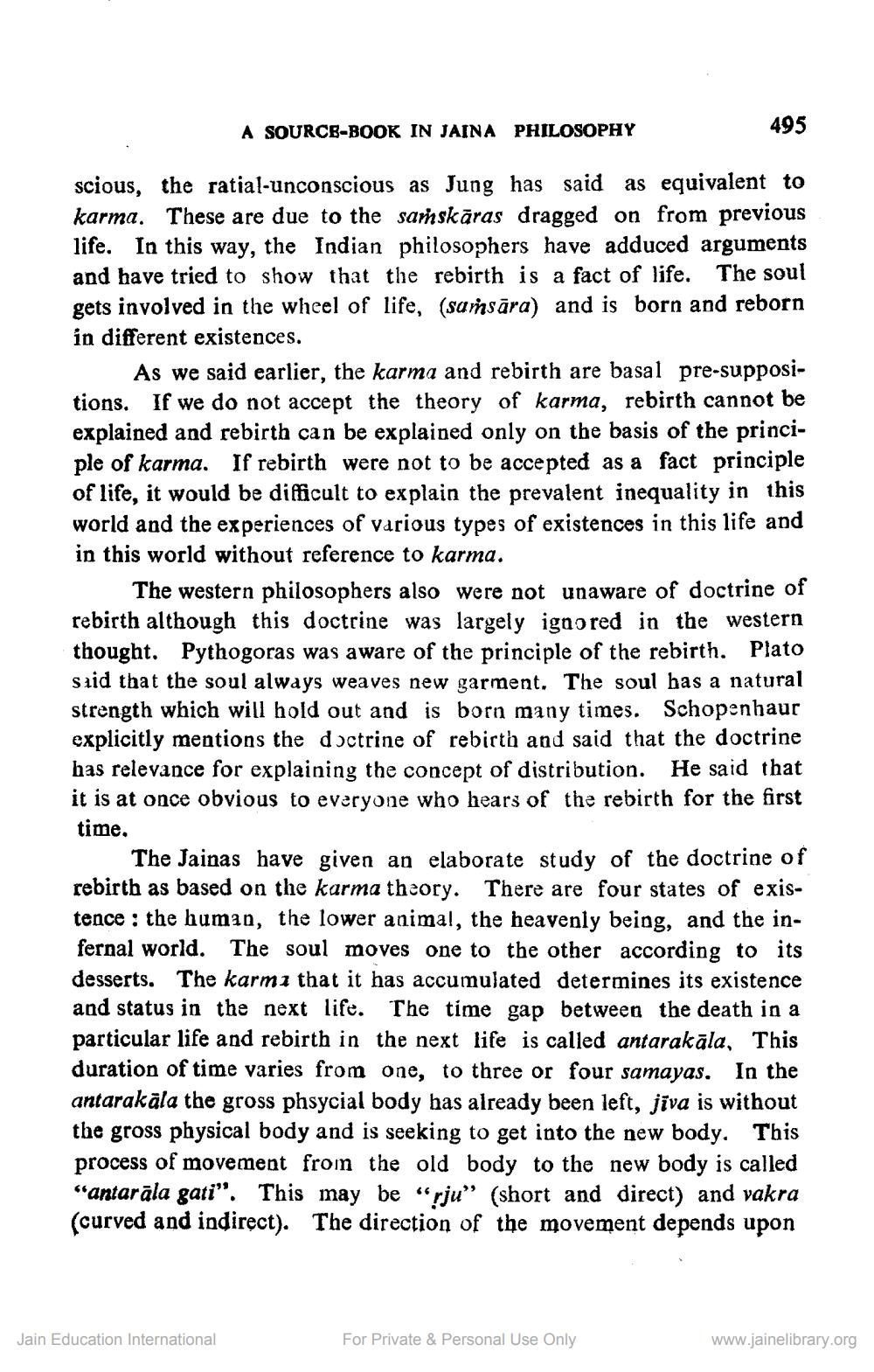________________
A SOURCE-BOOK IN JAINA PHILOSOPHY
scious, the ratial-unconscious as Jung has said as equivalent to karma. These are due to the saṁskāras dragged on from previous life. In this way, the Indian philosophers have adduced arguments and have tried to show that the rebirth is a fact of life. The soul gets involved in the wheel of life, (samsara) and is born and reborn in different existences.
495
As we said earlier, the karma and rebirth are basal pre-suppositions. If we do not accept the theory of karma, rebirth cannot be explained and rebirth can be explained only on the basis of the principle of karma. If rebirth were not to be accepted as a fact principle of life, it would be difficult to explain the prevalent inequality in this world and the experiences of various types of existences in this life and in this world without reference to karma.
The western philosophers also were not unaware of doctrine of rebirth although this doctrine was largely ignored in the western thought. Pythogoras was aware of the principle of the rebirth. Plato said that the soul always weaves new garment. The soul has a natural strength which will hold out and is born many times. Schopenhaur explicitly mentions the doctrine of rebirth and said that the doctrine has relevance for explaining the concept of distribution. He said that it is at once obvious to everyone who hears of the rebirth for the first time.
Jain Education International
The Jainas have given an elaborate study of the doctrine of rebirth as based on the karma theory. There are four states of existence: the human, the lower animal, the heavenly being, and the infernal world. The soul moves one to the other according to its desserts. The karma that it has accumulated determines its existence and status in the next life. The time gap between the death in a particular life and rebirth in the next life is called antarakāla, This duration of time varies from one, to three or four samayas. In the antarakāla the gross phsycial body has already been left, jiva is without the gross physical body and is seeking to get into the new body. This process of movement from the old body to the new body is called "antarāla gati". This may be "rju" (short and direct) and vakra (curved and indirect). The direction of the movement depends upon
For Private & Personal Use Only
www.jainelibrary.org




